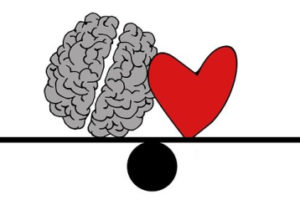
New drug inhibits cancer cell growth
A new compound starves the growth of cancer cells. Future anti-tumor drug for the future likely.

Compare any two critical illness insurance policies and you’ll see that the price varies.
Sometimes the difference is small. Other times it can be quite significant (as much as double). The more expensive product is not necessarily bad. So why do rates vary? After all they look virtually identical.
There are a number of reasons. We will cover the major ones on this webpage. It is important information to know before you buy this important coverage.
There are roughly 60 different insurance companies in the United States that currentluy offer some form of critical illness insurance. Each sets their own prices. Here are some reasons their prices vary.
Sales Commission. Insurance companies pay commissions to the insurance agents or brokers who market their products. You don’t pay this directly. It is built into the product. Sometimes the commission is low, maybe 10 percent of the premium. Other times in can be higher, 60, 70 or 80 percent. Agents deserve commissions to cover the time they spend educating consumers and helping them. They also have expenses. But commissions are one factor that determines what your insurance costs.
Insurance Company Expenses. There are many costs involved in creating, filing and supporting an insurance product. These are factored into the costs.
Health Risk Factors. Some critical illness insurance policies require that you meet few (if any) health requirements. That can be good for you, especially if you have some health issues. But, the insurance company assumes the greater risk that more unhealthy people will apply and ultimately become claimants. That is factored into their cost.
Claims Projections. Each of the insurance companies have actuaries who price their policies. They calculate how many people who buy the coverage will ultimately go on claim one day. That obviously will factor into what they charge for insurance coverage.
Clearly those who smoke or use tobacco products know they have a higher risk of getting cancer. They also have a higher risk of heart disease which results in a heart attack or stroke.
Insurance companies know that as well. Some insurance companies charge the same to applicants who smoke as to those who do not smoke. As a result, non-smokers end up subsiding some of that added risk.
If you smoke or use tobacco products, you should look for a policy that offers ‘uni-tobacco’ rates. Chances are you’ll save money.
If you DON’T smoke or use tobacco products you should definitely compare a product that offers lower rates for non-tobacco users. How can you tell? If they ask whether you use tobacco, it’s likely they offer lower rates.
This website has lots of data of ages when people get cancer, heart attacks or strokes. Cancer often happens at younger ages. Heart attacks and strokes generally happen at older ages (65 or older).
And 65 is often a financial planning milestone. That’s when you qualify for Medicare. It’s when you may start or be close to starting Social Security benefits and pension.
A cancer or critical illness policy that terminates at age 70 will cost less than one that covers you to older ages.
If cost is an issue (and it typically is) you might be just fine with a policy that terminates at age 70. By then you’ll be retired and on Medicare and getting Social Security.
But, if you worry that you want coverage that extends until you are 80 or older, buy a policy that has an older termination date. The added premium will be money well spent if you need the benefits when you are 80, 85 or older.
Let’s keep things simple. While men can get breast cancer, few do. It’s a disease that plagues women. Breast cancer generally happens at younger ages. We have good information on ages when cancer is diagnosed.
Heart attacks do happen to both men and women. But men suffer heart attacks at younger ages.
The people who price critical illness insurance know this. Sometimes they factor real risks into their policy pricing. Other times they charge ‘uni-sex’ prices.
If you are a woman in her 40s, a policy that charges men the same may save you money. A man in his 40s may be subsidizing your risk. But basically, the Association recommends that you compare. Comparisons almost always work in your favor.
You might be surprised to know that the coverage offered through your employer is NOT the lowest cost option. Very clearly you might find equal coverage for a lower cost.
Why isn’t employer critical illness insurance always the best deal? The plan may offer uni-tobacco rates. Or, it may offer uni-sex rates for both men and women.
Once again, it really pays to compare coverage. Today you can buy directly from insurance companies. They make it very easy to compare.
 The Association has an excellent Facebook page where we post import data and information. Plus the latest scientific findings regarding cancer, heart attacks and strokes. You can access the Association’s Facebook page. Like us and Follow us for regular updates.
The Association has an excellent Facebook page where we post import data and information. Plus the latest scientific findings regarding cancer, heart attacks and strokes. You can access the Association’s Facebook page. Like us and Follow us for regular updates.


A new compound starves the growth of cancer cells. Future anti-tumor drug for the future likely.

Better cardiovascular health in midlife can reduce dementia risk later in life.

Adults with the healthiest sleep patterns had a 42 percent lower risk of heart failure.

The Association advocates for the importance of planning and supports insurance professionals who market critical illness and cancer insurance.
Thank you for your interested in critical illness insurance. You are about to leave our site and be redirected to Unified Life Insurance Company’s website where you can learn more and apply online.
Your age, sex and use of tobacco helps to determine your estimated rate for this insurance coverage. We want to provide as accurate a number as possible.